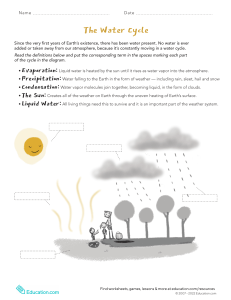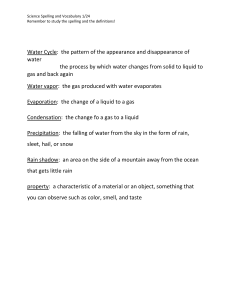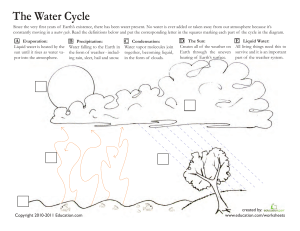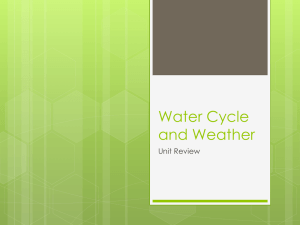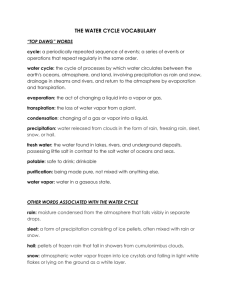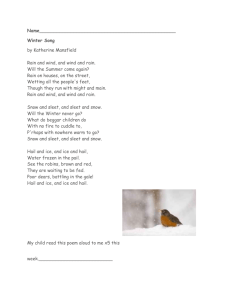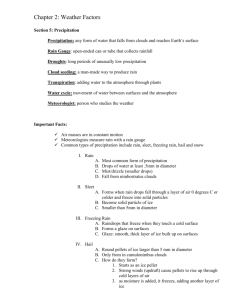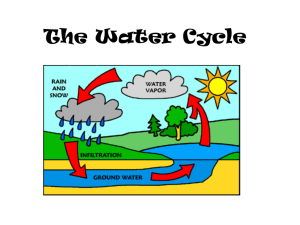Weather Patterns Vocabulary Review
advertisement
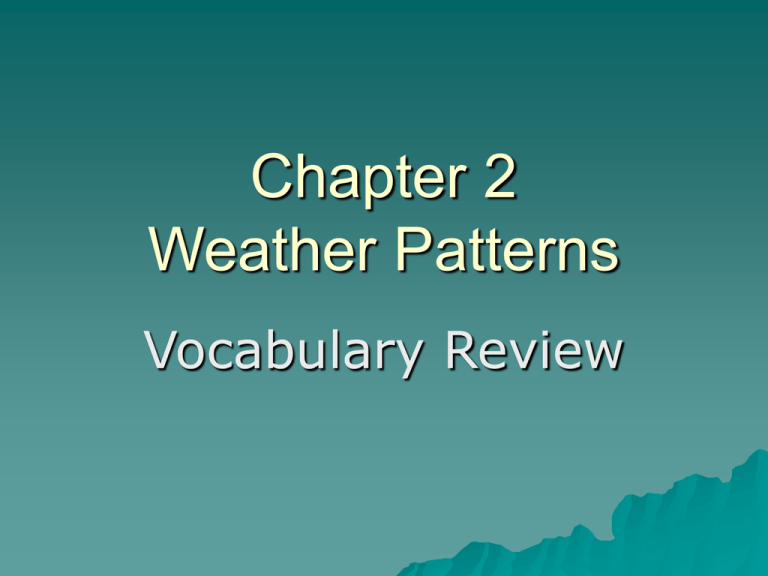
Chapter 2 Weather Patterns Vocabulary Review the condition of Earth’s atmosphere at a particular time and place weather the force of air molecules pushing on an area air pressure a wind that flows in the upper troposphere from west to east over vast distances at great speeds jet stream any type of liquid or solid water that falls to Earth’s surface, such as rain, snow, sleet, or hail precipitation the temperature at which air with a given amount of water vapor will reach saturation dew point the process by which liquid changes to gas evaporation a wind that changes direction with the seasons monsoon the influence of Earth’s rotation on things that move over Earth Coriolis effect the horizontal movement of air caused by differences in air pressure wind a condition of the atmosphere in which the rates of evaporation and condensation are the same saturation rain that freezes when it hits the ground or other surface and coats the surface with ice freezing rain the comparison of the amount of water vapor in the air with the maximum amount of water vapor that could be present in air at that temperature relative humidity winds that travel over long distances in steady patterns over several weeks global winds layered lumps or balls of ice that fall from cumulonimbus clouds hail the amount of water vapor in the air humidity the process by which a gas changes to a liquid condensation small pellets of ice that form when rain passes through a layer of cold air and freezes before hitting the ground sleet an instrument that measures air pressure in the atmosphere barometer rain that has become more acidic than normal due to pollution acid rain
